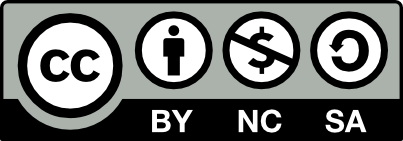Dispersion of acid without gastric perforation on ingestion of toilet cleaner: a rare autopsy case
Choose format
RIS BIB ENDNOTEDispersion of acid without gastric perforation on ingestion of toilet cleaner: a rare autopsy case
Publication date: 05.03.2024
Archives of Forensic Medicine and Criminology, 2023, Vol. 73 (3), pp. 272-277
https://doi.org/10.4467/16891716AMSIK.23.022.19322Authors
Dispersion of acid without gastric perforation on ingestion of toilet cleaner: a rare autopsy case
Toilet cleaner containing hydrochloric acid is a common item found in households all over the world. Due to the availability of the substance, it becomes one of the main contributors to corrosive damage to the gastrointestinal system. This study reports a case of a female in her 50s with an alleged history of ingestion of toilet cleaner an empty bottle of which was found together with a suicide note at the incident site. During the autopsy, the forensic expert made an intriguing observation regarding the dispersion of ingested acid to other organs without gastric perforation. Despite the absence of gastric perforation, the corrosive effects of the ingested acid were evident in various organs, including the liver and spleen. This phenomenon suggests a unique mechanism by which the acid is able to disperse and cause damage beyond the stomach, leading to widespread organ involvement. However, through a comprehensive analysis of the detailed history, typical macroscopic autopsy findings, and chemical analysis reports, it is possible to establish that the cause of death is corrosive acid poisoning. In such cases, further investigation is warranted to gain a better understanding of the underlying mechanisms responsible for the dispersion of the acid and its clinical implications. By delving deeper into these aspects, we can enhance our knowledge and contribute to the field of forensic medicine.
Koschny R, Herceg M, Stremmel W, Eisenbach C. Fatal course of a suicidal intoxication with hydrochloric acid. Case reports in gastroenterology. 2013;7(1):89-96
Bosher Jr LH, Burford TH, Ackerman L. The pathology of experimentally produced lye burns and strictures of the esophagus. Journal of Thoracic Surgery. 1951 May 1;21(5):483-9
Dalus D, Mathew AJ, Pillai SS. Formic acid poisoning in a tertiary care center in South India: a 2-year retrospective analysis of clinical profile and predictors of mortality. The Journal of Emergency Medicine. 2013 Feb 1;44(2):373-80
Cheng HT, Cheng CL, Lin CH, Tang JH, Chu YY, Liu NJ, Chen PC. Caustic ingestion in adults: the role of endoscopic classification in predicting outcome. BMC gastroenterology. 2008 Dec;8:1-7
Saxena D, Mishra PK, Sane MR, Tomar J, Yadav A. Delayed death due to Hydrochloric acid containing toilet-cleaner poisoning: A case report. Journal of the Indian Society of Toxicology. 2015;11(2):50-2
Yoshitome K, Miyaishi S, Ishikawa T, Yamamoto Y, Ishizu H. Distribution of orally ingested hydrochloric acid in the thoracoabdominal cavity after death. Journal of analytical toxicology. 2006 May 1;30(4):278-80
Kalayarasan R, Ananthakrishnan N, Kate V. Corrosive ingestion. Indian journal of critical care medicine: peer-reviewed, official publication of Indian Society of Critical Care Medicine. 2019 Dec;23(Suppl 4):S282
Lahoti D, Broor SL. Corrosive injury to the upper gastrointestinal tract. Indian Journal of Gastroenterology: Official Journal of the Indian Society of Gastroenterology. 1993 Oct 1;12(4):135-41
Shivakumar P, Sumangala CN. An autopsy based cross sectional study of corrosive acid poisoning cases brought to Victoria Hospital, Bengaluru. Journal of Indian Academy of Forensic Medicine. 2019;41(2):107-10
Swain R, Behera C, Gupta SK. Fatal corrosive ingestion: a study from South and South-East Delhi, India (2005–2014). Medicine, Science and the Law. 2016 Oct;56(4):252-7
Ceylan H, Özokutan BH, Gündüz F, Gözen A. Gastric perforation after corrosive ingestion. Pediatric surgery international. 2011 Jun;27:649-53
Mirza B, Ijaz L, Husnain M, Sheikh A. Accidental ingestion of hydrochloric acid causing acute gastric perforation in a child. Jour of surg Pakistan. 2011 Jan;16:45-6
Ramasamy K, Gumaste VV. Corrosive ingestion in adults. Journal of clinical gastroenterology. 2003 Aug 1;37(2):119-24
Shukhratovna NG, Erkinovna SD. THE ROLE OF GASTROINTESTINAL HORMONES IN THE PATHOLOGY OF THE DIGESTIVE SYSTEM. PEDAGOG. 2022 Nov 17;1(3):408-12
Matshes EW, Taylor KA, Rao VJ. Sulfuric acid injury. The American Journal of Forensic Medicine and Pathology. 2008 Dec 1;29(4):340-5
Information: Archives of Forensic Medicine and Criminology, 2023, Vol. 73 (3), pp. 272-277
Article type: Original article
Titles:
Dispersion of acid without gastric perforation on ingestion of toilet cleaner: a rare autopsy case
Dyspersja kwasu bez perforacji żołądka po spożyciu środka do czyszczenia toalet: rzadki przypadek sekcyjny
Department of Forensic Medicine and Toxicology, All India Institute of Medical Sciences
Department of Forensic Medicine and Toxicology, All India Institute of Medical Sciences
Published at: 05.03.2024
Received at: 15.09.2023
Accepted at: 13.12.2023
Article status: Open
Licence: CC-BY-NC-SA

Percentage share of authors:
Article corrections:
-Publication languages:
EnglishView count: 472
Number of downloads: 392
Suggested citations: Nature